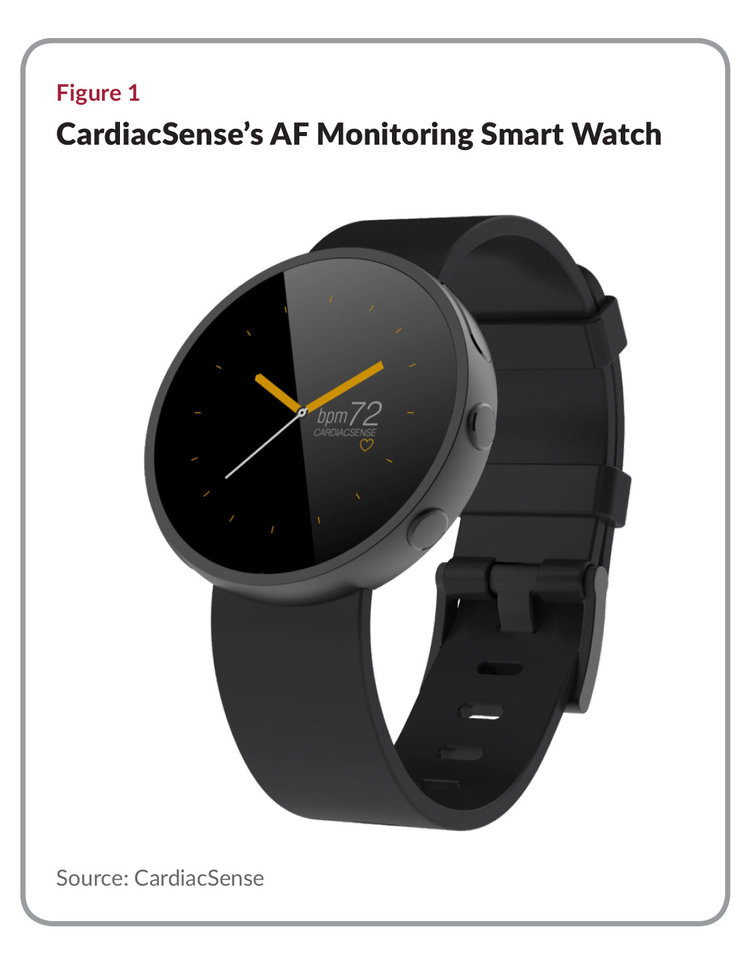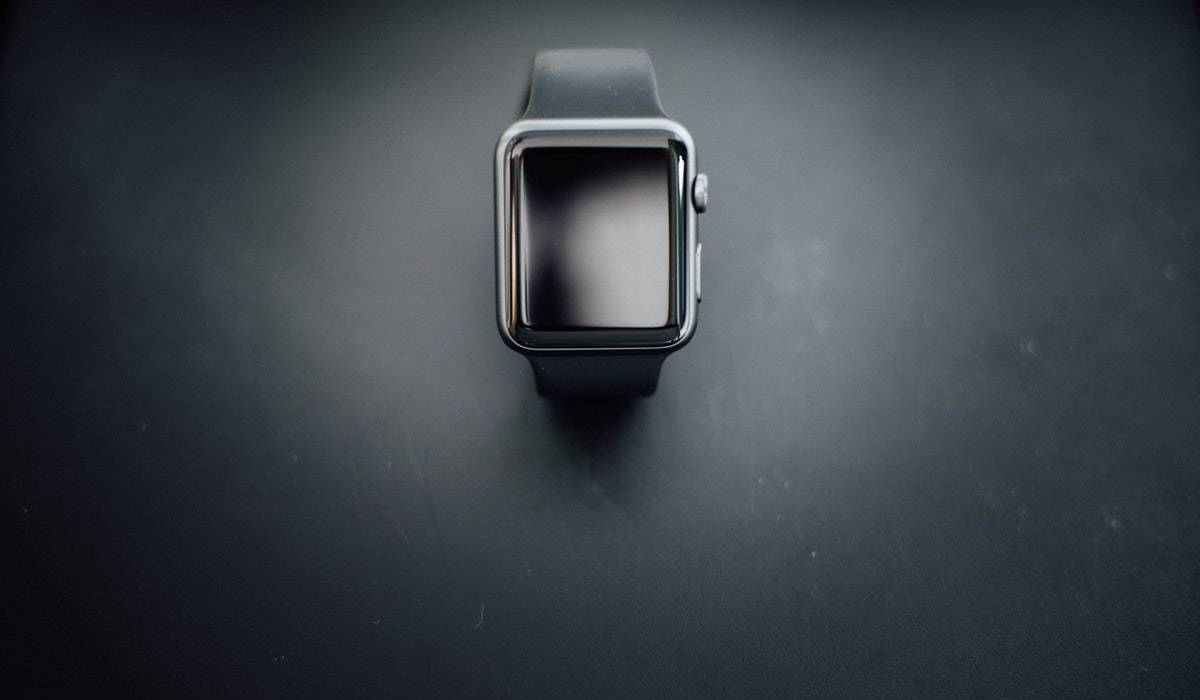ARTICLE SUMMARY:
Apple recently made a splash with its new ECG-enabled watch, but technology from an Israeli start-up may have a better chance of penetrating the multibillion-dollar ambulatory cardiac arrhythmia monitoring market. An excerpt from Executive Editor Mary Thompson’s October 31 feature, “Ambulatory ECG Monitoring Enters a New, More Patient-Friendly Era.”
As the ambulatory arrhythmia monitoring field evolves, consumer-focused wearables like Apple Inc.’s Series 4 Watch are likely to improve, possibly to the point where they can provide a diagnostic result, a development that would increase competitive pressure on existing diagnostic technologies like iRhythm Technologies Inc.’s Zio.
In fact, one start-up targeting this space is already working toward FDA diagnostic labeling for its arrhythmia monitoring smart watch. CardiacSense, based in Caesarea, Israel, will soon begin a pivotal clinical study with its watch that will support both FDA clearance and CE marking for the device as a diagnostic tool for atrial fibrillation. That puts it a step ahead of the Apple Watch’s new AF detection algorithms, which are not labeled for diagnostic use.
 According to Amnon Blanca, head of Business Development for CardiacSense, the company has developed a smart watch that utilizes both PPG and ECG signals and that incorporates a proprietary Artifact Sensor to address arm movement, which he calls “the Achilles Heel of PPG.” The device is a complete diagnostic system, he says, including an algorithm plus special optics and mechanics in the watch itself. “We do something that nobody else does,” he asserts, “and it’s all IP protected” (the company has filed 10 patents and four have been issued). The company’s Artifact Sensor is a motion noise filter that can “recognize any sort of movement,” says Blanca, which is what differentiates the firm’s technology from the Apple Watch. “When you move your arm, the accelerometer on your smart watch will recognize the movement,” he explains. “But what happens when you move your fingers or your palm without moving your arm? The PPG signal is going to go crazy, but the accelerometer won’t recognize that movement. Our Artifact Sensor can also recognize this movement,” he says, adding that the company has achieved high levels of accuracy for AF (more than 97%) in preliminary studies and is preparing to begin its official ambulatory clinical trial.
According to Amnon Blanca, head of Business Development for CardiacSense, the company has developed a smart watch that utilizes both PPG and ECG signals and that incorporates a proprietary Artifact Sensor to address arm movement, which he calls “the Achilles Heel of PPG.” The device is a complete diagnostic system, he says, including an algorithm plus special optics and mechanics in the watch itself. “We do something that nobody else does,” he asserts, “and it’s all IP protected” (the company has filed 10 patents and four have been issued). The company’s Artifact Sensor is a motion noise filter that can “recognize any sort of movement,” says Blanca, which is what differentiates the firm’s technology from the Apple Watch. “When you move your arm, the accelerometer on your smart watch will recognize the movement,” he explains. “But what happens when you move your fingers or your palm without moving your arm? The PPG signal is going to go crazy, but the accelerometer won’t recognize that movement. Our Artifact Sensor can also recognize this movement,” he says, adding that the company has achieved high levels of accuracy for AF (more than 97%) in preliminary studies and is preparing to begin its official ambulatory clinical trial.
CardiacSense hopes to obtain FDA de novo clearance for the watch as an AF diagnostic by mid-2019. The company is also planning other applications for its watch technology, including continuous blood pressure monitoring, and detection and emergency notification of cardiac arrest. The company’s eventual vision is to have a watch that provides “all the vital signs necessary for monitoring a person,” Blanca says. Moreover, the data it will collect will “enable us as watch developers, and most importantly, as the data keepers, to go from sickness management to health management.”
Initially founded in 2009 as consumer health company SportTracker (it rebranded as CardiacSense about four years ago), CardiacSense is a portfolio company of Merchavia Holdings & Investments Ltd. To date, the company has raised nearly $5 million from Merchavia as well as angels and other private investors. And, it has a partnership with Cleveland Clinic, which Blanca says is working with the firm on its business model and will be involved in a post-market US clinical trial of the watch.
“CardiacSense intends to partner to bring its technology to market, but its first choice is not a rival in the consumer smart watch space. Rather, the company hopes to partner with a large medical device firm, preferably one that is already operating in the arrhythmia monitoring market.”
When asked if the company has any trepidations about going up against tech giant Apple in the marketplace, Blanca admits that it won’t be simple. “But we are very confident in our technology and our IP,” he asserts, adding that the firm will compete directly with Apple if need be, but “we will not go head-to-head with Apple by ourselves.” CardiacSense intends to partner to bring its technology to market, but its first choice is not, as some might assume, an Apple rival in the consumer smart watch space (although it wouldn’t refuse such a collaboration if offered, says Blanca). Rather, the company hopes to partner with a large medical device firm, preferably one that is already operating in the arrhythmia monitoring market.
To understand that reasoning, you need only consider what Apple is facing going forward, Blanca explains. “Apple is not a player in the medical arena—you need a connection to the hospitals, you need to work with physicians. They’re not in this domain; it will take them a long time. But if our technology works and we team with a company that is already operating in this space, the go-to-market is much shorter.” (Interestingly, Apple appears to be pushing into the medical arena at a surprisingly rapid pace. Not only is the company working with Stanford University researchers on Apple Watch-based arrhythmia monitoring, but it recently announced a collaboration with orthopedic implant company Zimmer Biomet Inc. to conduct a 10,000-patient clinical study of Zimmer’s new mymobility app for the Apple Watch. The app tracks patients following hip and knee replacement surgery, collecting both patient-reported feedback and continuous health and activity data from the Watch.)
“We’re in an interesting time,” notes Blanca, “because consumer electronics and medical are starting to overlap. That’s why Apple is interested—it’s a huge market. But the medical arena is lagging behind the consumer space in accepting new technologies—it’s moving slowly. And it’s easier to adopt a new product through existing channels.”
That said, Blanca is appreciative of the attention Apple is bringing to the arrhythmia monitoring space. Apple’s launch of the Series 4 Watch “did only good things for us,” he says. “Because now that Apple is [getting into this field] there’s no question about the market or the need. We only need to show that we do better than Apple, and we know for a fact we are doing better than them.”
#MedicalDevice #CommunityBlog #strategy #medtech #medicaldevices #ICYMI #trends #perspective #MedTechStrategist #global #regulatory #technology #fda #digitalhealth #apple #applewatch #ecg #zimmer #biomet #cardiacsense #arrhythmiamonitoring #iRhythmtechnologies
![]() Trial MyStrategist.com and unlock 7-days of exclusive subscriber-only access to the medical device industry's most trusted strategic publications: MedTech Strategist & Market Pathways. For more information on our demographics and current readership click here.
Trial MyStrategist.com and unlock 7-days of exclusive subscriber-only access to the medical device industry's most trusted strategic publications: MedTech Strategist & Market Pathways. For more information on our demographics and current readership click here.
